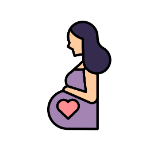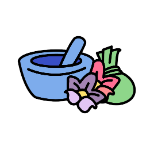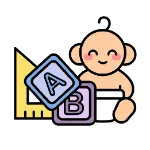
Health And Wellness
Q&A With Expert Series: Your Top Breastfeeding Concerns Answered!
7 min | Updated on 30-03-2023 by HappyPreggie
Just like pregnancy and delivery, breastfeeding is a unique and challenging journey for mums and their babies. But this whole process might present some seemingly unanswered questions. While breastfeeding is a personal matter for mothers, whoever you ask certainly won’t have the same answers.

(Q & A Expert Series With Dr. Renee Chan)
Here, we have compiled a list of surprisingly common concerns that mums usually have in breastfeeding answered by Dr. Renee Chan, a mother, Doctor (MBBS) and an International Board Certified Lactation Consultant (IBCLC©) at Mara & Marco Lactation, who joined us and answered all the worried mums about their breastfeeding concerns. Thank you, Dr. Renee.
Let's jump into the questions:
This is quite a common question among mothers who are planning to breastfeed. The good news here is that breast size does not affect milk production. Breast milk production is by the glandular tissues in our breasts and the size of our breasts do not reflect on the amount of these milk-producing tissues in our breasts. In fact, breast size reflects more on our breast storage capacity. If you have a smaller breast storage capacity, you may have to breastfeed more frequently to keep up with your breast milk supply. The adequacy and timely removal of breast milk are the factors that help with our milk production.

(Image credits to Canva)
Before diving into thinking that you have a low milk supply, you need to find out if you really do have a low milk supply. Oftentimes, mothers who came to me for a low milk supply, actually have an adequate supply. The problems that they face are the baby’s shallow latch or tongue-tie, and flat or inverted nipple which causes ineffective milk transfer resulting in their babies crying even though just given a feed.

(Image credits to Canva)
However, some mothers may be facing true low milk supply if they have a condition known as insufficient glandular tissue, in which their breasts don’t develop normally and may not have enough milk-making tissues to meet their baby’s needs. They still can breastfeed but may not be producing enough breast milk. If detected early during a prenatal breastfeeding consultation, we can start to prepare these mothers with maximizing their milk supply even during pregnancy. This is one of the benefits of having a prenatal breastfeeding consultation because it helps us detect problems as such and also other problems like PCOS, hyper-hypothyroidism, diabetes, and flat or inverted nipples so that we can deal with them early even during pregnancy to make sure to have the best milk supply for babies.
As our milk supply works in a supply and demand, the 4 things that help to improve our milk supply are:
Engorged breast mostly happens during Day 4-5 after delivery, when your breast milk starts to ‘come in’. The way to go about with breast engorgement is to have adequate breast emptying either by pumping or breastfeeding. Frequently empty breast for 8-12 times per day, feed baby according to feeding cues, and make sure baby has a deep latch for effective milk transfer and to avoid cracked nipples. Frequent breast emptying also helps to prevent clogged ducts and mastitis as these are often what would happen if breast engorgement is not treated. You can use warm moist heat or have a warm shower before feeding to help with milk flow and use ice packs and cold cabbage leaves on your breast after feeding to soothe your breasts.

(Image credits to Canva)
Breast lumps can be common during breastfeeding. Oftentimes, these painful lumps are due to engorgement, clogged duct, and mastitis. Other possible causes are breast abscess (which can happen if engorgement or mastitis are not treated immediately), a galactocele (which is a harmless, milk-filled cyst), a lactating adenoma (which is a painless benign lump occurring during late pregnancy or during breastfeeding, and disappear when breastfeeding ends), a fibroadenoma (which is non-cancerous and the growth relates to the menstrual cycle) or a breast cyst (which is a fluid-filled and benign). Rarely a painful lump is due to cancer but it is always important to get medical advice if the lump is still there or increasing in size after about a week or if you have any concerns about it.

(Image credits to FirstCry Parenting)
It is safe to breastfeed your baby if your nipples are bleeding and you can continue breastfeeding. However, if your nipples are too painful, you can rest your nipples for 1-2 days and feed your baby with expressed milk and re-introduce your breasts gradually after resting. Always be sure to get help from a lactation consultant to find out the cause of sore, crack, and bleeding nipples so that you get treated faster and not affect your milk supply.

(Image Credits to Verywell Family)
We hope this helped answer some of the concerns you may have. What other questions do you have? Let us know, and we will help you find the answers. Your questions may even be featured in our future Q & A series blog.
In the meantime, to know more about breastfeeding you can read other blogs by HappyPreggie. If you want to know about some of the breastfeeding positions you can read- Top 9 Breastfeeding Positions You Need To Know or you can also read- Tips On How To Increase Your Breast Milk Supply Naturally.
(Q & A Expert Series With Dr. Renee Chan)
Here, we have compiled a list of surprisingly common concerns that mums usually have in breastfeeding answered by Dr. Renee Chan, a mother, Doctor (MBBS) and an International Board Certified Lactation Consultant (IBCLC©) at Mara & Marco Lactation, who joined us and answered all the worried mums about their breastfeeding concerns. Thank you, Dr. Renee.
Let's jump into the questions:
Q1. Does the size of the breast affect milk production?
This is quite a common question among mothers who are planning to breastfeed. The good news here is that breast size does not affect milk production. Breast milk production is by the glandular tissues in our breasts and the size of our breasts do not reflect on the amount of these milk-producing tissues in our breasts. In fact, breast size reflects more on our breast storage capacity. If you have a smaller breast storage capacity, you may have to breastfeed more frequently to keep up with your breast milk supply. The adequacy and timely removal of breast milk are the factors that help with our milk production.
(Image credits to Canva)
Q2. How can I enhance my low supply?
Before diving into thinking that you have a low milk supply, you need to find out if you really do have a low milk supply. Oftentimes, mothers who came to me for a low milk supply, actually have an adequate supply. The problems that they face are the baby’s shallow latch or tongue-tie, and flat or inverted nipple which causes ineffective milk transfer resulting in their babies crying even though just given a feed.
(Image credits to Canva)
However, some mothers may be facing true low milk supply if they have a condition known as insufficient glandular tissue, in which their breasts don’t develop normally and may not have enough milk-making tissues to meet their baby’s needs. They still can breastfeed but may not be producing enough breast milk. If detected early during a prenatal breastfeeding consultation, we can start to prepare these mothers with maximizing their milk supply even during pregnancy. This is one of the benefits of having a prenatal breastfeeding consultation because it helps us detect problems as such and also other problems like PCOS, hyper-hypothyroidism, diabetes, and flat or inverted nipples so that we can deal with them early even during pregnancy to make sure to have the best milk supply for babies.
As our milk supply works in a supply and demand, the 4 things that help to improve our milk supply are:
- Frequent breast stimulation: By doing a lot of skin-to-skin with baby.
- Empty breast adequately: Emptying every 3-4 hours, not missing the night pumping or feeding (very important), can also try to hand express after each feed to empty remaining milk from the breast.
- Effective breast emptying: Ensure the baby has a deep latch, you can also try breast compression during breastfeeding to help with milk flow to encourage the sleepy baby to start suckling again.
- Galactogogues: You can also try some galactogogues such as fenugreek, blessed thistle and goats rue but always remember not to neglect the above 3 things mentioned which actually play a more important role in enhancing your milk supply.
Q3. How to avoid and soothe engorged breasts?
Engorged breast mostly happens during Day 4-5 after delivery, when your breast milk starts to ‘come in’. The way to go about with breast engorgement is to have adequate breast emptying either by pumping or breastfeeding. Frequently empty breast for 8-12 times per day, feed baby according to feeding cues, and make sure baby has a deep latch for effective milk transfer and to avoid cracked nipples. Frequent breast emptying also helps to prevent clogged ducts and mastitis as these are often what would happen if breast engorgement is not treated. You can use warm moist heat or have a warm shower before feeding to help with milk flow and use ice packs and cold cabbage leaves on your breast after feeding to soothe your breasts.
(Image credits to Canva)
Q4. Are painful lumps in the breast during breastfeeding normal and how to relieve them?
Breast lumps can be common during breastfeeding. Oftentimes, these painful lumps are due to engorgement, clogged duct, and mastitis. Other possible causes are breast abscess (which can happen if engorgement or mastitis are not treated immediately), a galactocele (which is a harmless, milk-filled cyst), a lactating adenoma (which is a painless benign lump occurring during late pregnancy or during breastfeeding, and disappear when breastfeeding ends), a fibroadenoma (which is non-cancerous and the growth relates to the menstrual cycle) or a breast cyst (which is a fluid-filled and benign). Rarely a painful lump is due to cancer but it is always important to get medical advice if the lump is still there or increasing in size after about a week or if you have any concerns about it.
(Image credits to FirstCry Parenting)
Q5. Can I breastfeed if my nipples are bleeding?
It is safe to breastfeed your baby if your nipples are bleeding and you can continue breastfeeding. However, if your nipples are too painful, you can rest your nipples for 1-2 days and feed your baby with expressed milk and re-introduce your breasts gradually after resting. Always be sure to get help from a lactation consultant to find out the cause of sore, crack, and bleeding nipples so that you get treated faster and not affect your milk supply.
(Image Credits to Verywell Family)
We hope this helped answer some of the concerns you may have. What other questions do you have? Let us know, and we will help you find the answers. Your questions may even be featured in our future Q & A series blog.
In the meantime, to know more about breastfeeding you can read other blogs by HappyPreggie. If you want to know about some of the breastfeeding positions you can read- Top 9 Breastfeeding Positions You Need To Know or you can also read- Tips On How To Increase Your Breast Milk Supply Naturally.
Join the largest support network for family health and well-being. Ready to get started?
Get started
















